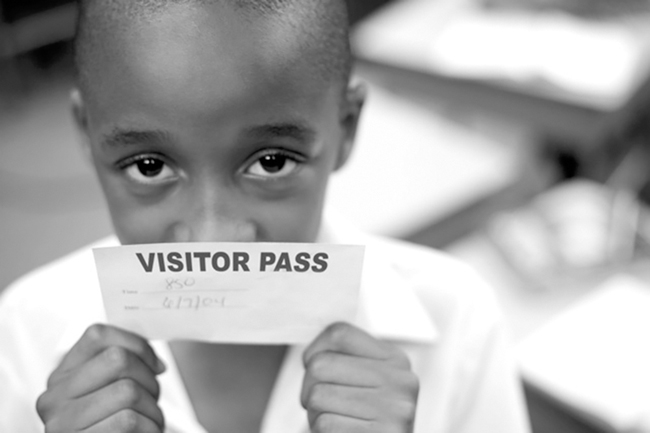Monday’s report by the Annie E. Casey Foundation gives new meaning to the aphorism: Do the crime, do the time. As it turns out, the people doing the time are also children, whose lives are traumatically and often irrevocably affected.
It’s a sad commentary about our inclination, particularly in this part of the country, to put the emphasis on acting tough on crime and locking up people for longer and longer sentences. While the negative impact of this approach is no longer arguable, the new report spotlights the fact that the ultimate price is not paid by taxpayers who pay more money to lock people up than to send them to a Tennessee university for four years but also the social costs to children with incarcerated parents.
It’s time for all of us to agree that the single, most important measure of whether we are making progress in this community is found in whether our poor children have better opportunity for upward mobility.
Today, the odds of a child born in a high-poverty neighborhoods moving into the top 20% is less than 3%. In fact, it’s 2.6%.
This is not just problematic. It is immoral. And ignoring it is not an option.
The Imperative
Just think: the Memphis region is #1 in child poverty among regions of more than one million people and #6 among the largest 50 largest metros for the percentage of the population that is under the age of 18.
Just imagine the odds stacked against so many of our children. They live in a city where poverty is a birthright for one out of every two of them and their families are confronted by lack of opportunity, lack of adequate pre-K, and lack of individualized interventions to help them. And yet, the incarceration of their parents is as devastating as these.
It’s a social cost for a child that significantly outstrips the price of jailing an offender, because these children start out behind in life and they often stay there.
Only two states – Kentucky at 13% and Indiana at 11% – had more children who have experienced parental incarceration (2011-12) than Tennessee, where 10% of children fall into this category. Even Mississippi is lower at 7%. Meanwhile, those bastions of blue, New York, Illinois, and Massachusetts are respectively at 4%, 6%, and 5%. New Jersey has the lowest percentage at 3%.
The report shows the propensity of solidly red states to lock up more, pass tougher and tougher laws, and beef up prosecutions with longer sentencing options. And they do it while opposing all increases to the minimum wage, cutting business taxes that fund services for children, and focusing more on kids in the womb than kids in their cities.
Getting Every One In The Room
As Shelby County Mayor Mark Luttrell often said when he was sheriff, crime reduction is a three-legged stool – suppression, intervention, and prevention. He pointed out that we do the easy part well – arresting people – but we have not pursued the intervention and prevention programs that in so many communities are keys to fighting crime. To Mayor Luttrell’s point, for many years, the public services – parks, libraries, and community centers – have scratched for funding although they are essentially crimefighting assets.
Meanwhile, the default for crimefighting strategies is more law enforcement officers and more prosecutors. The irony is that more funding for the innovative programs pioneered by the public defender’s office could produce profound impacts on the crime rate.
By the way, the Shelby County Public Defender’s office led by visionary Chief Public Defender Stephen Bush recently was named “Public Office of the Year” by the Tennessee Chapter of National Association of Social Workers for his role in the Jericho Project diversion program, which also was named one of the top “Criminal Justice Innovations in 2015” by the Center for Court Innovation and the National Association of Prosecuting Attorneys.
And yet, when strategies for fighting crime are discussed, it’s a rare room that includes the public defender’s office. And yet, the fact is that it’s the one local office that encounters the children of incarcerated parents face-to-face and this office undoubtedly has ideas for ways to balance punishment and rehabilitation in such a way that the damage to families and community are mitigated.
Memphis’ High Incarceration Rate
In addition, Just City has the right priorities within this context: increasing access to diversion programs, reforming bail bond, bolstering public defender systems, reforming sentencing, restoring rights and freedoms, and increasing access to jobs, housing, counseling, financial literacy, and other resources.
In many cities, it is the police director who are presenting comprehensive plans for reducing crime. Some have even called for reducing the size of their forces and putting more money into prevention and intervention. But for the past 15 years, we’ve essentially been part of an arms race that puts more and more money into boots on the street. This is why the appointment of a new police director by Memphis Mayor Jim Strickland offers such potential for new thinking and a broader understanding of what can support crime reduction besides more firepower.
The Memphis MSA has one of the highest incarceration rates in the U.S. The incarceration rate here per 100,000 population is 1,836. That compares to rates in Detroit of 467.1; Birmingham 499.9; St. Louis 795.1; New York City 859.6; Baltimore 897.6; Washington, DC 900.9; Chicago 938.3; Atlanta 1015.8; Dallas 1,244.6; Richmond 1,315.8; 1,555.7 San Francisco; Jacksonville 1,625.8, and Tampa 1,696.
Meanwhile, using 2012 police officer per capita data from FBI, Memphis had 36.7 officers per 10,000 population, Baltimore 47.4, St. Louis 41.5, Atlanta 40.6, Birmingham 40, Detroit 36.7, and New Orleans 35.0. Other Tennessee cities’ rates were Chattanooga 27.4, Knoxville 22.5, and Nashville 21.1.
In other words, without any disruptive innovation in the system, the percentage of children with incarcerated parents is highly unlikely to decrease even as the policies behind mass incarceration are held up to criticism from all sides.
Rippling Negative Effects
According to the Annie E. Casey Foundation report, about 45% of men who are 24 years old or younger are fathers. We mention this because the overwhelming majority of parents in jail are male. The report said that children with a parent in jail are typically younger and living in low-income families of color, usually with a young single mother who has limited educated. Compared to their white peers, African American and Latino children are over seven and two times more likely, respectively, to have an incarcerated parent.
“Having a parent incarcerated is a stressful, traumatic experience of the same magnitude as abuse, domestic violence, and divorce, with a potentially lasting negative impact on a child’s well-being,” the report said. “These young children lose a parent’s support during their critical early years, a time when their families and communities should be laying the foundation for healthy development and success.”
The results are regularly mental health issues such as depression and anxiety, and hamper educational achievement, according to the foundation report.
Here’s the kicker: One study found that if incarceration rates hadn’t increased during a 24-year period, the poverty rate would have fallen by 20%.
Enlightened Self-Interest
The foundation wrote: “The sheer number of absent people depletes available workers and providers, while constraining the entire community’s access to opportunity – including individuals who have never been incarcerated. The continual cycle of residents going to and from prison makes for places, and faces, constantly in flux. Just living in a neighborhood with a high incarceration rate increases residents’ chances of suffering from depress and anxiety…heightened police vigilance can cast a shadow over their children, families, and homes. And the absence of parents, most of them fathers, weakens neighborhoods and tears apart social networks, which in turn can affects the local economy. Parents’ inability to find work when they return home further destabilizes their communities and increases their likelihood of reverting to criminal activity.”
The recommendations, which are founded in common sense, make you wonder why we don’t ever get around to doing them. They included maintaining family connections between parent and child, encouraging judges to consider the impact on children and families during sentencing and prison assignments; early education centers and schools should offer programs to offset emotional and mental health issues; providing family counseling and parenting courses after the parent returns; connecting returning parents with pathways to employment; and increasing family access to community-based organizations.
With about 7,000 people returning from prison to Memphis each year, it’s hard to think of a place that has more self-interest in addressing this problem than ours.
No one is advocating for the most violent offenders to be released from prison, but we are advocating for examining the tendency to over-charge low-income defendants, for them to get longer sentences, and for them to be charged and sentenced for non-violent crimes that are regularly treated totally different for people with means.
**
Join us at the Smart City Memphis Facebook page for daily articles, reports, and commentaries relevant to Memphis.



